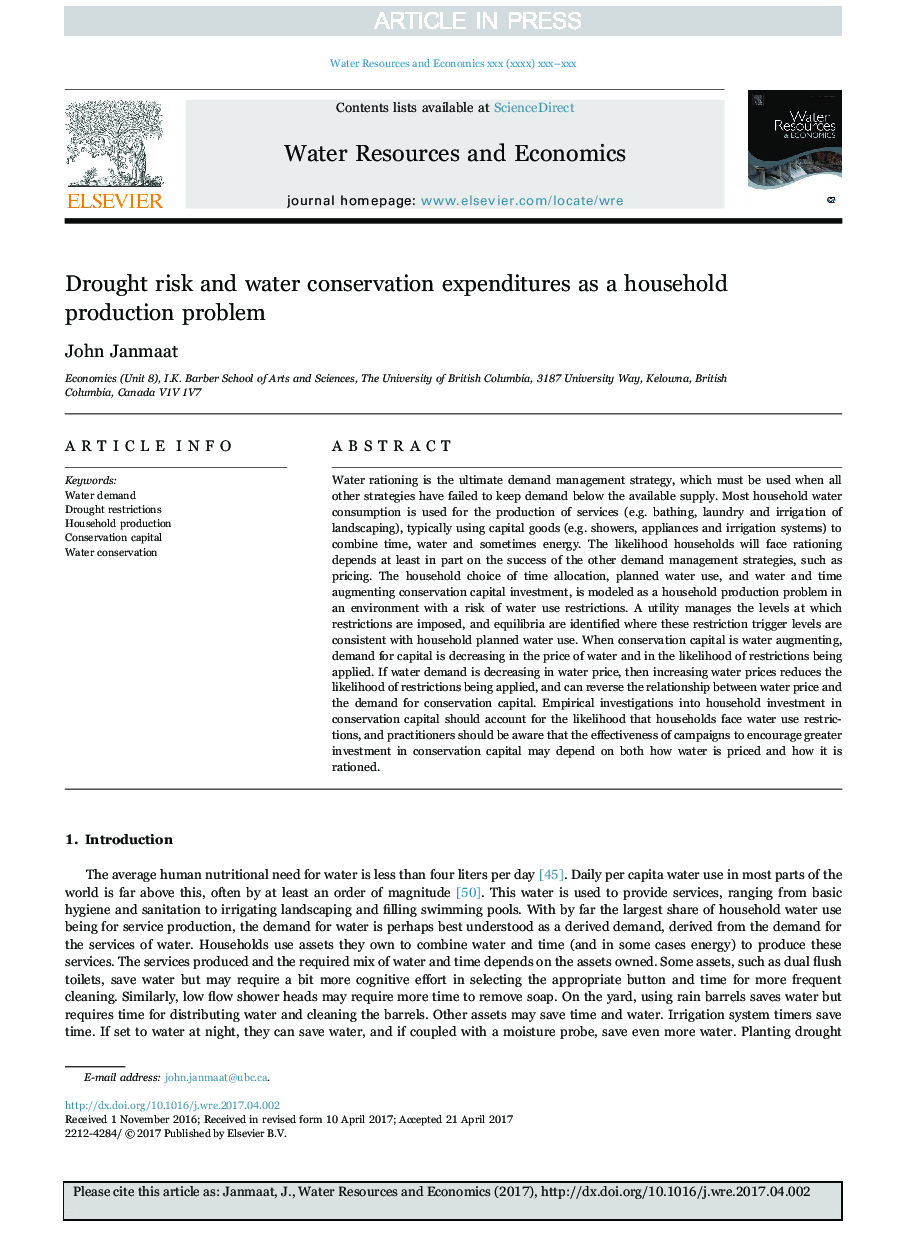| Article ID | Journal | Published Year | Pages | File Type |
|---|---|---|---|---|
| 7390824 | Water Resources and Economics | 2018 | 18 Pages |
Abstract
Water rationing is the ultimate demand management strategy, which must be used when all other strategies have failed to keep demand below the available supply. Most household water consumption is used for the production of services (e.g. bathing, laundry and irrigation of landscaping), typically using capital goods (e.g. showers, appliances and irrigation systems) to combine time, water and sometimes energy. The likelihood households will face rationing depends at least in part on the success of the other demand management strategies, such as pricing. The household choice of time allocation, planned water use, and water and time augmenting conservation capital investment, is modeled as a household production problem in an environment with a risk of water use restrictions. A utility manages the levels at which restrictions are imposed, and equilibria are identified where these restriction trigger levels are consistent with household planned water use. When conservation capital is water augmenting, demand for capital is decreasing in the price of water and in the likelihood of restrictions being applied. If water demand is decreasing in water price, then increasing water prices reduces the likelihood of restrictions being applied, and can reverse the relationship between water price and the demand for conservation capital. Empirical investigations into household investment in conservation capital should account for the likelihood that households face water use restrictions, and practitioners should be aware that the effectiveness of campaigns to encourage greater investment in conservation capital may depend on both how water is priced and how it is rationed.
Related Topics
Life Sciences
Agricultural and Biological Sciences
Aquatic Science
Authors
John Janmaat,
